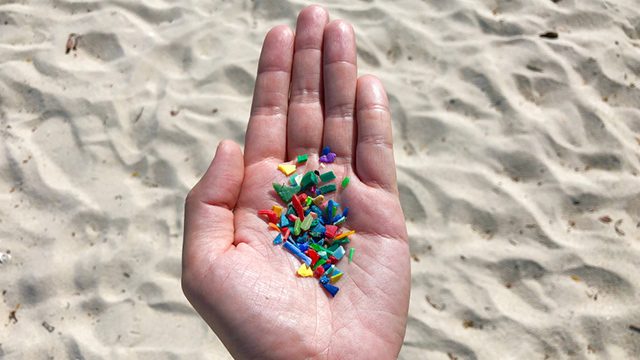SUMMARY
This is AI generated summarization, which may have errors. For context, always refer to the full article.

MANILA, Philippines – Much has been reported about plastics polluting the oceans, but did you know that plastics are also now slowly making their way to our food chain?
The world is churning out millions of tons of plastics each year – 90.5% of which are left unrecycled. In 2017, plastics production around the world amounted to 348 million metric tons. Most of these eventually turned into plastic wastes that have seeped into large bodies of water.
The Philippines, for one, was named the third biggest source of plastic waste in oceans globally, accounting for 5.9% of total mismanaged plastic waste in the world’s seas. Since plastics take too long to decompose, typically lasting for 200 up to 500 years, they outgrow most man-made and mass-produced materials.
These plastics, when not discarded properly, break down into tiny, less than 5-millimeter materials that are easier to leak into oceans and harder to filter out because they become almost invisible to the naked eye. These are called microplastics.
Microplastics come in two forms: primary and secondary. Primary microplastics move directly into the oceans from land, while secondary microplastics are created when their bigger versions enter the oceans and later break down under the waters after being exposed to sunlight and weathering.

Few studies have been conducted about microplastics in the Philippines but a 2016 preliminary study found microplastics in Bacoor Bay-cultured tahong (mussels).
A 2019 study also confirmed the existence of microplastics in Pasig River. The waters from Pasig River flow to the world’s oceans through Manila Bay, which is also considered one of the country’s major fishing grounds.
“The microplastics from the Pasig River could be ingested by organisms in Manila Bay such as mollusks and fish,” the report by researchers consisting of students and faculty members from the Polytechnic University of the Philippines and Far Eastern University said. “These organisms are commonly harvested for human consumption.”
Humans consume “tens of thousands” of plastic pieces each year. A 2019 analysis said an adult male could expect to ingest up to 52,000 microplastic particles annually, although that may come from not just seafood. (READ: Humans consume ‘tens of thousands’ of plastic pieces each year)
However, the impact of microplastics on humans is still unclear. More research and analysis are needed to fully grasp the dangers of microplastics to human health. Still, it’s worth thinking about: knowing all these things, how willing are you to eat plastic? – Rappler.com
Rappler is building a network of climate advocates, LGUs, corporations, NGOs, youth groups, and individuals for the #ManyWaysToZeroWaste campaign, a movement pushing for responsible ways to use and reduce plastic. Go here to know how you can help.
Add a comment
How does this make you feel?
There are no comments yet. Add your comment to start the conversation.